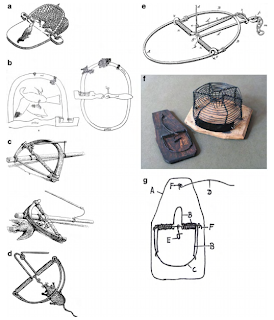I was thinking about the mousetrap analogy that refutes the idea of Irreducible Complexity. If you aren't familiar with it, here it is:
One thing that always bothered me about Miller's argument is that the mousetrap he's using in his analogy didn't, in fact, evolve. So, could it have evolved? There are many examples of traps in the natural world. I thought I'd collect a few for you.
Killer Fungi - Cordyceps are a group of fungi that infect insects and take over their minds.
Zombie Cockroach - More mind control. Here's a species of wasp that injects a neurochemical into the cockroach to allow the wasp to guide it into a grave. After laying eggs on the still-live cockroach, the wasp seals the tomb.
The Ant Lion - an animal that makes a trap for insects.
Fungi that make lassos to capture little worms called nematodes

